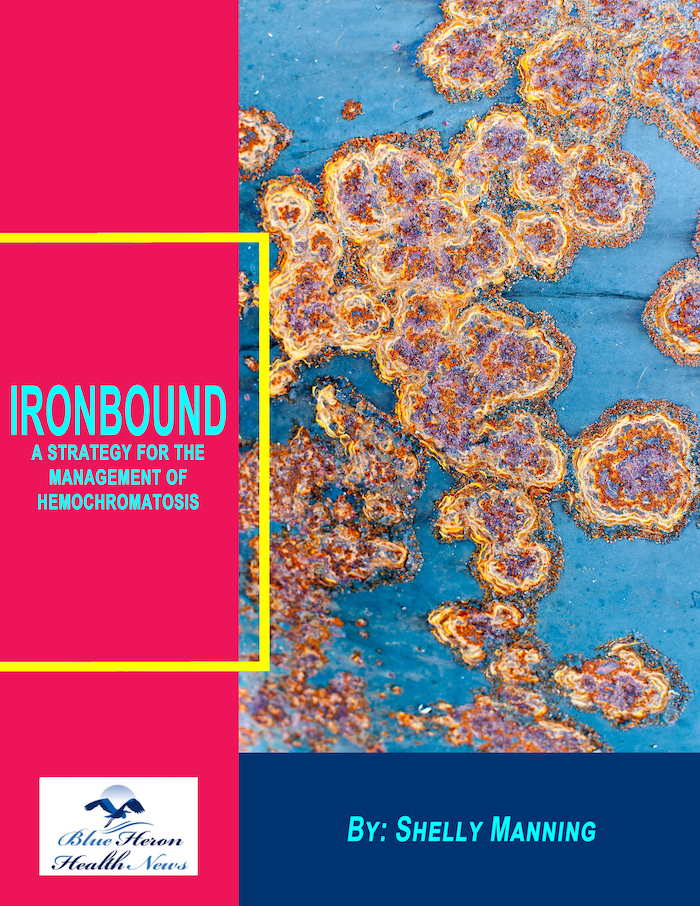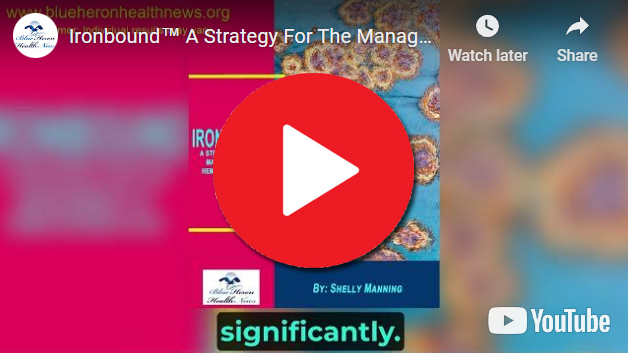
Ironbound™ A Strategy For The Management Of Hemochromatosis By Shelly Manning The 5 superfoods explained by Shelly Manning in this eBook play an important role in reducing the levels of HCT. The absorption of the excessive amount of iron by the genes of HCT can be blocked by these superfoods. In this way, the information provided in this eBook can help in resolving the problem of excess iron in your body naturally without any risk of side effects.
How does hemochromatosis affect the heart?
Impact of Hemochromatosis on the Heart
Hemochromatosis is a condition characterized by excessive iron accumulation in the body, which can lead to damage in various organs, including the heart. The heart is particularly vulnerable to iron overload, which can result in serious cardiac complications if left untreated. Here’s a detailed overview of how hemochromatosis affects the heart, including pathophysiology, clinical manifestations, diagnosis, and management.
Pathophysiology of Cardiac Damage in Hemochromatosis
1. Iron Overload in the Heart
- Iron Accumulation: In hereditary hemochromatosis, genetic mutations (most commonly in the HFE gene) lead to reduced hepcidin levels, resulting in increased intestinal iron absorption. Excess iron is deposited in various organs, including the heart.
- Oxidative Stress: Excess iron generates reactive oxygen species (ROS) through the Fenton reaction, causing oxidative damage to cardiac cells.
- Inflammation: Iron-induced oxidative stress triggers an inflammatory response, leading to further tissue damage.
- Fibrosis: Chronic oxidative stress and inflammation promote the deposition of fibrous tissue in the heart, impairing its function.
2. Impact on Cardiac Function
- Cardiomyopathy: Iron overload causes cardiomyopathy, a disease of the heart muscle that impairs the heart’s ability to pump blood effectively. This can manifest as either dilated cardiomyopathy (enlarged and weakened heart chambers) or restrictive cardiomyopathy (stiffened heart walls).
- Arrhythmias: Iron deposition can disrupt the electrical conduction system of the heart, leading to various types of arrhythmias, which are irregular heartbeats.
Clinical Manifestations
1. Cardiomyopathy
- Dilated Cardiomyopathy: Characterized by an enlarged and weakened heart muscle, leading to decreased cardiac output.
- Symptoms: Shortness of breath (dyspnea), fatigue, swelling in the legs, ankles, and feet (edema), and reduced exercise tolerance.
- Restrictive Cardiomyopathy: Characterized by stiffened heart walls, restricting the heart’s ability to fill properly during diastole.
- Symptoms: Shortness of breath, fatigue, palpitations, and signs of heart failure (e.g., swelling, fluid retention).
2. Arrhythmias
- Atrial Fibrillation: An irregular, often rapid heart rate that can lead to blood clots, stroke, heart failure, and other heart-related complications.
- Symptoms: Palpitations, shortness of breath, weakness, chest pain, and dizziness.
- Ventricular Arrhythmias: Irregular heartbeats originating in the lower chambers of the heart, which can be life-threatening.
- Symptoms: Palpitations, fainting (syncope), and sudden cardiac arrest.
3. Heart Failure
- Mechanism: Progressive iron-induced damage to the heart muscle can lead to heart failure, a condition where the heart is unable to pump blood effectively to meet the body’s needs.
- Symptoms: Shortness of breath, persistent coughing or wheezing, swelling in the abdomen, legs, and ankles, fatigue, and rapid or irregular heartbeat.
Diagnosis
1. Clinical Evaluation
- History and Physical Examination: Assess symptoms such as shortness of breath, fatigue, palpitations, and swelling. Look for signs of heart failure and other complications.
2. Laboratory Tests
- Serum Ferritin and Transferrin Saturation: Elevated levels indicate increased iron stores and overload.
- Liver Function Tests: To assess liver involvement, as liver disease can coexist with cardiac complications in hemochromatosis.
3. Genetic Testing
- HFE Gene Testing: Identifies mutations such as C282Y and H63D associated with hereditary hemochromatosis.
4. Cardiac Imaging
- Echocardiogram: An ultrasound of the heart to evaluate heart size, structure, and function. It can help diagnose cardiomyopathy and assess the severity of heart failure.
- Cardiac MRI: Magnetic resonance imaging can quantify iron concentration in the heart and provide detailed images of cardiac structure and function.
5. Electrocardiogram (ECG)
- Purpose: Detects arrhythmias and assesses the electrical activity of the heart.
6. Holter Monitor
- Purpose: Continuous ECG monitoring over 24-48 hours to detect intermittent arrhythmias that may not be captured during a standard ECG.
Management
1. Phlebotomy
- Mechanism: Regular blood removal to reduce iron levels. Each session removes about 500 ml of blood, containing approximately 250 mg of iron.
- Frequency: Initially weekly or biweekly until iron levels normalize, followed by maintenance phlebotomies every few months.
- Effectiveness: Reduces iron overload, alleviates symptoms, and can improve cardiac function.
2. Iron Chelation Therapy
- Use: For patients who cannot tolerate phlebotomy or have severe iron overload.
- Medications: Deferoxamine, deferasirox, and deferiprone, which bind to excess iron and facilitate its excretion.
- Effectiveness: Helps reduce iron levels and prevent further cardiac damage.
3. Medications for Heart Failure and Arrhythmias
- Beta-Blockers: Reduce heart rate and blood pressure, helping to manage heart failure and certain arrhythmias.
- ACE Inhibitors and ARBs: Help relax blood vessels, reduce blood pressure, and improve heart function.
- Diuretics: Reduce fluid buildup in the body, alleviating symptoms of heart failure.
- Antiarrhythmic Drugs: Manage and prevent arrhythmias.
4. Lifestyle Modifications
- Diet: Avoid iron-rich foods and vitamin C supplements, as vitamin C enhances iron absorption. Limit alcohol intake to reduce liver damage.
- Exercise: Regular, moderate exercise can improve cardiovascular health, but strenuous activity should be avoided if heart function is significantly compromised.
- Avoid Raw Shellfish: To reduce the risk of infections like Vibrio vulnificus, which can be severe in individuals with hemochromatosis.
5. Monitoring and Follow-Up
- Regular Monitoring: Periodic assessment of iron levels, cardiac function (via echocardiograms and cardiac MRIs), and rhythm monitoring (via ECGs and Holter monitors).
- Screening for Complications: Regular screening for complications such as worsening heart failure, new or worsening arrhythmias, and progression of cardiomyopathy.
6. Advanced Treatments
- Implantable Cardioverter-Defibrillator (ICD): For patients at high risk of life-threatening ventricular arrhythmias, an ICD can be implanted to detect and treat these arrhythmias.
- Heart Transplantation: In cases of end-stage heart failure where other treatments have failed, heart transplantation may be considered.
Conclusion
Hemochromatosis significantly impacts the heart, leading to complications such as cardiomyopathy, arrhythmias, and heart failure. These complications arise from excessive iron accumulation, oxidative stress, and inflammation. Early diagnosis and effective management, including phlebotomy, iron chelation therapy, medications, lifestyle modifications, and regular monitoring, are crucial to prevent or mitigate cardiac damage. By addressing iron overload and managing cardiac symptoms, individuals with hemochromatosis can improve their heart health and overall quality of life.
Ironbound™ A Strategy For The Management Of Hemochromatosis By Shelly Manning The 5 superfoods explained by Shelly Manning in this eBook play an important role in reducing the levels of HCT. The absorption of the excessive amount of iron by the genes of HCT can be blocked by these superfoods. In this way, the information provided in this eBook can help in resolving the problem of excess iron in your body naturally without any risk of side effects.
